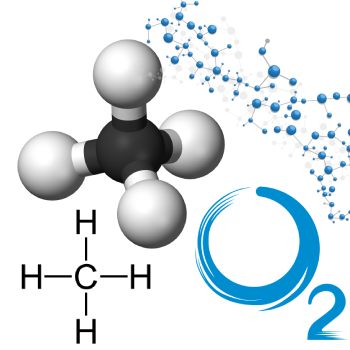The search for extraterrestrial life has pushed scientists to consider various approaches. One of these has been the search for biosignature gases – these are gases that can prove the existence of life forms on a planet at present or at some point in the past. We look at how they come about, how scientists can detect them, and the potential they hold for advancements in the astronomy field.

What Are Biosignature Gases
For a long time, scientists have been referencing these gases in relation to work that gears at proving that life may exist on other planets. A biosignature gas is a gas that can provide scientific proof of such life, whether in the present or the past. A planet whose atmosphere boasts such gas can be categorized as having served as a home to living forms, while one without such markers is seen as uninhabited. As such, it becomes easier to single out the planets with the most potential to prove habitable.

So, how do they get into the atmosphere? They result from biological processes. A good example is oxygen. Where plants exist on a planet, their respiratory processes result in the formation of oxygen. Methane is also another good example. The presence of microbes and their subsequent activities give rise to the production of this gas. As such, where such gases are present, scientists can point to proof of life.
But how can scientists prove that the combination of gases points to life? It all comes down to the amount of the gases and their percentages. Take the example of oxygen and methane. If these gases exist on a planet without any life forms that rely on these gases or use them, the gases would eventually react and neutralize each other. As such, their presence indicates that life forms exist to continuously replenish and use these sources, thus creating a sustainable balance.
But that’s not all. The amounts of the gases matter, as does their sustainability in the long term. Scientists must measure these levels over a long period to assess whether the gases are leveling or increasing. If the amounts seem to be unstable or dwindling, the possibility of life on the planet is brought into question.
Scientists must also consider the nature of the planet when assessing the gas levels. Below are factors known to result in the detection and stability of these gases:
- The temperature – extremes can result in low stability.
- The pressure – It should not be too high, e.g., due to thick layers in the atmosphere, or too low.
- The presence of other chemicals – This could result in reactions that could affect levels.
Therefore, as scientists look at the gases, they must also account for the planet’s overall composition and how this could affect the availability of these biosignature gases.
Are the Sources Always Biological
Biological processes, such as photosynthesis, are the primary sources of these gases. However, they also have non-biological courses. A good example is geological activity. Planets with substantial activities can have high levels of biosignature gases, even if they do not have existing life forms. Scientists must be able to separate the possible sources to verify that life, indeed, is responsible for these markers.
The Top Biosignature Gases
Gases rank differently based on their importance in sustaining life as well as their likelihood of resulting from biological processes. As such, the following gases are often at the top of the list.
Oxygen
This gas mainly results from photosynthesis – it can be from algae, plants, or any other organisms that rely on this process. High levels of this gas suggest the existence of life. After all, this gas is highly reactive, and a planet can only sustain high atmospheric levels if biological processes continuously replenish its levels.
Ozone
This gas does not exist by itself. Instead, it results from reactions with oxygen. Its presence thus points to a high oxygen level, thus enabling scientists to look into the possibility of biological processes that could be maintaining the oxygen levels.
Methane
Where this gas presents, biological processes are likely. Often, it points to microbial activity, e.g., from digestive processes in ruminants or anaerobic activity in swamps. The presence of life is further compounded if the high methane levels present alongside high oxygen levels – the two would otherwise react if there was no process replenishing them in the long run.
Nitrous oxide
Bacterial activities in the soil and water produce this gas. It can also result from other microbial processes. The more of this gas is in the atmosphere, the stronger the likelihood that life exists on a planet.
Isoprene
This is also a notable gas in this aspect as it points to the possible existence of life forms. Since various organisms can produce this gas, it allows scientists to consider organisms that would not necessarily fit the other categories.
Researchers are now looking beyond the typical gases and expanding their research to cover thousands of options to increase the accuracy of their findings.
How do Scientists Find These Gases
Looking for gases in the atmosphere requires the use of advanced approaches. Below are the ones that have the most reliable results:

- Spectroscopy. This process examines the light coming from a star as it passes through the atmosphere and comparing the wavelengths to the known absorption rates for each gas. Scientists can then categorize the gases based on their baselines.
- Gas-Chromatography-Mass-Spectrometry. This approach works in space missions where scientists collect gases. They then separate the gases and categorize them based on their mass to charge ratio.
- In Situ Assessments. Like spectrometry, this method collects and analyzes a sample from the surface of the planet or other celestial beings before testing for the presence of gases.
- Spectropolarimetry. This method analyzes the polarization of light as it passes the atmosphere. Since this process is affected by gases in different ways, scientists can then determine the gases.
Researchers are now using remote sensing to detect gases using their satellites and telescopes, which has eased the identification process.
Conclusion
While the presence of biosignature gases can result from non-biological processes, scientists can account for factors such as gas levels and stability to determine if they are an indicator of life forms. They have thus proven to be a milestone in the search for evidence of extraterrestrial life, pushing astronomy to yet another remarkable era.
